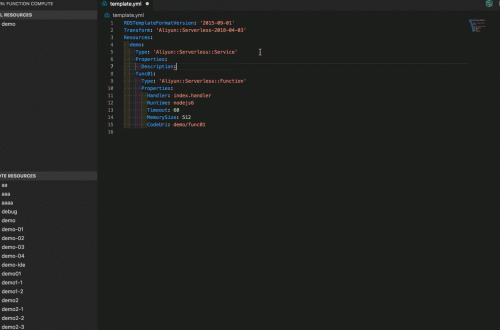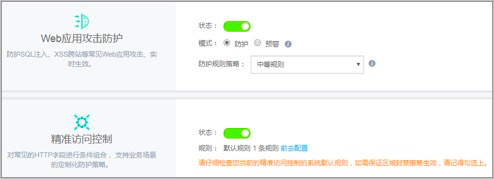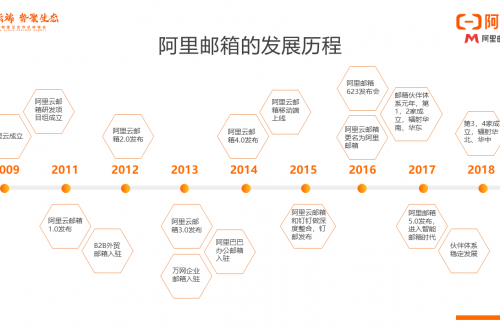本文作者:蔣龍
本文轉自:芯片開放社區(OCC)
視頻源:
全文中英文
Hello everyone, my name is Peter, and I come from Alibaba Group. Today I am very happy to introduce a new development tool for CORE-V platform. CDS, the full name is Chip Development Suite.
大家好,我是來自阿里巴巴的Peter。今天我非常高興給大家介紹一款CORE-V平臺的開發工具,CDS,全程是Chip Development Suite
CDS is an eclipse-based graphical development tool, and we use eclipse plus more than 40 plug-ins to makes it into CDS. With CDS, a developer can create a new project based on CORE-V core, then coding and building the project. CDS also provides the flash loader and debugger which can help developers download images into target and debug the target in a graphical debugger view.
CDS是一款基於eclipse的圖形開發工具,我們在eclipse基礎上增加了超過40個插件,從而變成了CDS,使用CDS,開發者可以創建基於CORE-V核的工程,並且能夠進行代碼開發和編譯。CDS也提供了Flash下載器、調試器等,這些工具可以幫助開發者將程序鏡像下載到嵌入式設備端,並進行圖形化的調試。
So, today I will give you a show about how to create and debug a CORE-V project in CDS. Before the presentation, we should do some preparation:
今天我將給大家演示,如何在CDS中創建和調試一個CORE-V的工程。在演示之前,我們需要做一些準備工作。
We will use GENESYS2 FPGA board to simulate a CORE-V platform, I have prepared the bit files which uses the default USB cable for debugging, and I got the SDK from github: the pulp-runtime project and the pulp-runtime-examples project. In CDS, we use some examples from the pulp-runtime-examples project, and put the source files together with pulp-runtime project, and make these files into CDS projects. Besides, I have configured the board with “USB/SD” config mode to start GENESYS2 board.
我們使用GENESYS2 FPGA開發板來模擬CORE-V硬件平臺,工程使用github上開源的pulp-runtime工程。在CDS中,我們使用了一些從github上下載的開源例程。我已經配置了GENESYS2開發板為USB/SD的工作模式。
Before starting CDS, we should connect the GENESYS2 board at first. Just prepare one USB line, and connect it from computer’s USB port to the USB cable for debugging on GNENSYS2 board.
啟動CDS之前,我們需要準備一個USB線,一端連接電腦,一段連接GENESYS2開發板上的USB調試口。
After this preparation, we can start CDS in PC, just double click the icon in the desktop, and then choose a folder as the workspace in CDS.
上手準備完成以後,我們可以啟動CDS,只需要雙擊雙面CDS圖標,然後選擇一個目錄作為CDS工作空間。
when enter the workspace at the first time, CDS will show the welcome page, we can create the project by clicking “project creator”, and also, we can create a project in project explorer view. Right click blank area in project explorer, chose T-Head CPU project, and in the popup dialog, we can see all the project templates which supported by CDS. Here we have added CORE-V project templates into CDS, a user can find CORE-V platform in “Target Template Selected” tree view. Now there are two project templates here, we chose the simple as the template to create a new CORE-V project, just input project name, and click finish.
首次進入工作空間,CDS將會顯示welcome頁面,我們可以點擊project creator圖標進行工程創建,也可以在工程窗口中創建工程。右擊工程窗口空白位置,選擇T-HEAD CPU工程,然後彈出對話框,我們可以看到CDS支持的全部工程模板。這裡我們已經將CORE-V工程模板加入CDS中,用戶可以在Target Template Select視圖中找到CORE-V平臺。現在這裡有兩個CORE-V工程,我們選擇一個簡單的工程模板用來創建一個全新的CORE-V工程,在這裡輸入工程名,點擊Finish
After finish creating project, we can right click project node, and start to build our project.
完成工程創建,我們右擊工程節點,選擇build工程
Now project is built successfully, next, we can start to debug it on the GENESYS2 board. Just right click the project and chose “Debug As-> T-Head Application”. Then CDS goes into the debug perspective, connects the board and automatically downloads the images into the GENESYS2 board and then auto run the program into main, just like this.
現在工程成功編譯,我們可以在GENESYS2開發板上進行調試。直接右擊工程,選擇Debug As->T-Head Application,然後CDS進入了調試視圖,連接開發板,並自動將程序下載到GENESYS2開發板中,最後運行程序到main函數,就像當前這樣。
When success to go to main function, CDS has been in debug perspective, in this perspective, we can control the board’s state, we can run the board by click continue button, we can also let the board execute the project by stepping the source code, just like this.
但我們進入main函數以後,CDS已經在調試視圖中了,在這裡視圖夏,我們可以控制開發板的狀態,我們可以通過點擊continue按鈕運行開發板,我們可以點擊單步按鈕,單步執行我們的工程,就像這樣。
In “Disassembly View”, we can see the current position of the program, and see the next instructions which will be executed by CORE-V CPU.
在反彙編窗口中,我們可以看到當前程序的位置,並且可以看到後續CORE-V CPU即將執行的指令。
And in “Debug View”, we can see the call stacks of the program, and find the source code by click each frame, besides, the disassembly view also changes the display according to the selected frame
在Debug視圖中,我們可以看到程序的調用棧,並且通過點擊每個幀,可以看到對應幀的源代碼,此時反彙編窗口也會顯示對應的指令。
We can read and write the CORE-V’s registers in the “Register View”, To access the variables of the program, we should use “Variable view”. In the “Expression View”, we can input any variable or symbol of our project, and read it or modify it.
我們可以在寄存器窗口中讀寫CORE-V的寄存器。變量窗口中可以訪問程序的變量。在表達式窗口中,我們可以輸入工程中的任何符號,並且可以讀寫符號對應的內存值。
So, that is the first part of my presentation about how to develop and debug a CORE-V platform with CDS.
以上是我們的第一部分演示,演示瞭如何在CDS中開發和調試一個CORE-V平臺
For the above demo, I must say thanks to Hugh, because he helps me a lot about how to start the GENESYS2 board, and with his help, I can integrate CORE-V project into CDS in a short time.
關於上述demo,我非常感謝Hugh(CORE-V的一個人員),因為他給了我很多的幫助,讓我們能夠啟動GENSYS2開發板,並且在他的幫助夏,我很快地將CORE-V工程集成到了CDS中。
Now, I want to show another powerful feature of our CDS, it’s called “T-Head Profiling”
現在,我將給你們展示CDS的另外一個重要功能,T-Head Profiling
As we have known, CDS is an IoT IDE for CORE-V cores, in CDS, a user can create, build and debug a CORE-V based project, besides, CDS provides many other functions which will help developer create a high performance and low power images as soon as possible, the “T-Head Profiling” is one of those functions.
正如我們所知道的,CDS是一個開發調試CORE-V的IoT集成開發環境,用戶可以在CDS中創建、調試CORE-V工程,此外,CDS還提供了其他可以幫助開發者開發出高性能、低功耗鏡像的功能,T-Head Profiling就是其中一個。
In CDS, we can start the T-Head profiling for some project in an easy way, now I will show it.
在CDS中,我們可以很方便地為一些工程啟動T-Head Profiling功能,現在我將演示一下。
Here is the same project that I just created, we can see the main logic, this is some simple arithmetic operations.
這裡是我剛剛創建的工程,我們可以看到main函數的邏輯,這裡有一些簡單的算術操作。
If these operations are part of a real logic for some algorithm, there will be a very practical question: what is the hotspot code block of this algorithm? and which function should I put more energy to optimize? The answer is using CDS “T-Head Profiling”
加入這裡的操作邏輯是一個真實的算法中的一部分,那麼將會有個工程性的問題:這個算法的熱點代碼是什麼?我應該在哪個函數上花較多的精力去優化?使用CDS的T-Head Profiling功能將很好地解決這些問題。
Right now, the “t-head profiling” only support project which will run in the simulator instead of real hardware, so here we have configured a simulated platform for this CORE-V project, let me show it, just right click project and select profile configuration, double click t-head profiling, then we success to create a profiling configuration for our project, we can see the project has the default platform, xxxxxxx
目前,T-Head Profiling功能僅支持模擬器運行,所以這裡我們配置了一個CORE-V工程的模擬平臺。右擊工程,選擇Profile Configuration,雙擊T-Head Profiling,然後我們成功的創建了一個profiling配置,我們可以看到種類默認的虛擬平臺。
We can click profile to start t-head profiling, CDS will show the “Profiling Running” page… in this page, we could see the dynamic situation of the program’s execution which includes hotspot function rank, the memory access, interrupt and fast interrupt info.
我們可以點擊Profile來啟動T-Head Profiling功能,CDS將會顯示Profiling Running頁面,在這個頁面中給,我們可以看到程序的動態運行狀態,包括熱點函數排序、內存訪問、中斷信息。
After click “Finish Profiling” button, “Profiling Overview” page pops up, this page shows the cycles rank of five top functions, Here shows the instructions total number of each instruction type. It also shows the I/D cache miss rate & branch predict rate, for those CPUs which have such hardware modules.
點擊Finish Profiling按鈕以後,會彈出Profiling Overview頁面,在這個頁面中,會展示週期前五的函數,這裡會展每個指令類型的總數,還有為哪些包含相關硬件的CPU展示cache miss率和分支預測準確率。
The “TimeLine” page gives the whole execution lifetime of the program, we can see the instruction stream of any range of the lifetime. When we double click any time point in timeline, the executed instructions during this time range will show here, by double clicking each line of the list, we will locate the corresponding source code. We can also narrow the time line, and see the detail executed instructions info.
TimeLine頁面展示了程序運行的全部運行時間,我們可以看到整個程序運行的指令流,我們可以雙擊任何時間點,此時刻的指令流會顯示在這裡,雙擊每個指令,可以看到該指令對應的源代碼。我們可以通過縮短時間線,來看到程序執行流的細節信息。
In the “Function” page, we can see all functions list, the instruction column shows the total instructions in this function except its sub functions, the cycle column shows total cycles in the function except its sub functions. we can click each column header to rank the list according to the column header.
在Function頁面中,我們可以看到全部函數列表,insn列顯示了當前函數執行的指令總數,cycle列顯示了當前函數執行的週期數。通過點擊每個列,可以按照該列對當前函數進行排序。
The last but not the least, the “Call Paths” view. This view shows the dynamic call paths of the program, this page’s columns are similar with “Function” page, but the page shows a tree view instead of a list. In Call Paths tree, we can see the dynamical execution call path, and we can find each function’s instructions and cycles info in that path.
最後,Call Paths視圖顯示了程序動態調用軌跡。該頁面的列類似於Function視圖,但是種類使用了樹形展示,在Call Paths樹中,我們可以看到程序動態調用路徑,我們可以找到每個函數的指令和週期信息。
And that’s all for the T-Head Profiling, I hope this function can help users optimize the program which run in CORE-V platform
以上就是T-Head Profiling的全部功能,希望這個功能可以幫助開發人員優化運行在CORE-V平臺上的程序。
Thanks for your attention.
感謝。


